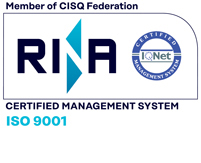Vietnam
THE QUIET REVOLUTION OF THE STEEL SECTOR ACROSS VIETNAM
In the sweltering heat of a steel mill at Dung Quat Economic Zone in the south-central province of Quang Ngai, molten metal glows like lava, flowing steadily through massive channels towards the rolling lines. Recently, steel flows not only from furnaces, but from the determination of private firms that have redefined the rules of the game.Once seen as a heavy industry dominated by state-owned enterprises, Vietnam’s steel sector has undergone a quiet revolution. According to the Ministry of Industry and Trade (MoIT), the private sector has assumed the role of locomotive, leading investment and innovation. Before the 2000s, production was led by the Vietnam Steel Corporation with outdated processes and low quality, yielding only about 100,000 tonnes of crude steel per year.With infrastructure development a central pillar in the country’s 2045 vision, steel has become the bedrock of industrial growth. Roads, bridges, high-speed railways, and smart urban zones all require consistent, high-quality steel.Hoa Phat Group, the largest steelmaker in Vietnam, now controls 35 per cent of the construction steel market. From its $3 billion Dung Quat complex to recent partnerships with Primetals, the company is expanding into high-grade railway, vehicles, and offshore wind.Speaking at the company’s AGM a few weeks ago, chairman Tran Dinh Long underscored the group’s strategic pivot to prioritise the domestic market. He announced plans to reduce exports below 20 per cent from 31 per cent and focus on national infrastructure projects.The company’s Dung Quat 2 project is scheduled to start construction in May and begin operations in 2027. The group targets approximately $6.75 billion in revenue for the year, a 21 per cent increase compared to 2024, and a projected after-tax profit of about $595 million, up 24.8 per cent on-year.In the first quarter of 2025 alone, the group recorded over $1.5 billion in revenue and roughly $131 million in after-tax profit, increases of 22 and 16 per cent, respectively, compared to the same period last year.In 2024, Vietnam’s production of metal-coated and pre-painted steel sheets reached nearly 5.7 million tonnes, with export volumes accounting for almost three million tonnes, representing 52.5 per cent of total output. The key driver behind these achievements lies in the foundation of quality, supported by technological autonomy and production capacity.Hoa Sen Group represents another side of private sector dynamism. Specialising in coated steel and roofing, it has mastered branding, distribution, and export strategies.In 2023, Hoa Sen controlled 25 per cent of the domestic market share and over 30 per cent of exports in coated steel. Its products have reached strict markets like the EU and the US, while fellow private firm Ton Dong A holds 15.5 per cent market share. Private steelmakers now dominate the coated steel segment entirely, highlighting their agility.Coated steel is essential to many sectors due to its versatility and high demand. It plays a vital role in construction, automotive, household appliances, and electrical industries, serving as both a protective material and a performance enhancer.While Vietnam’s steel sector has made giant strides, it now faces a delicate balancing act: aligning domestic ambitions with global realities. The government’s targets raising national capacity to 40–45 million tonnes annually by 2030.The World Steel Association projects global consumption to rise by just 1–1.5 per cent per year through the end of the decade, amplifying concerns over potential overcapacity and price volatility.In response, the Vietnamese government has taken proactive steps. Anti-dumping duties of up to 37 per cent were imposed on steel imports from China and South Korea. Also, Vietnam formally recognises the private sector as central to innovation and digital transformation, signalling stronger state backing for enterprise-led growth. Groups like Hoa Sen and Ton Dong A are also aligning their operations with the EU’s Carbon Border Adjustment Mechanism, investing in low-emission technologies to retain export competitiveness. (ICE HO CHI MINH CITY)
Fonte notizia: Vietnam Investment Review




